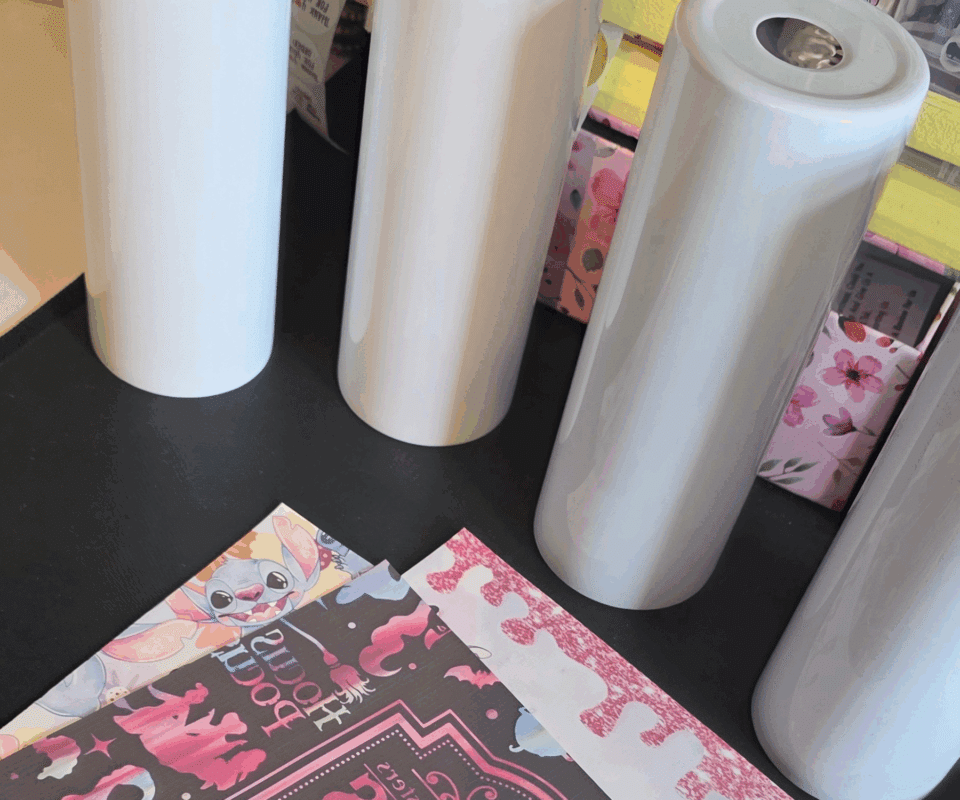10 Things To Know When Sublimating:
Your Guide to Vibrant, Lasting Designs
Sublimation. Just the word sounds a little magical, doesn’t it? And honestly, sometimes it feels that way! As someone who’s spent countless hours experimenting with sublimation, I can tell you it’s a fantastic way to create vibrant, permanent designs on a wide range of products. But, like any craft, there’s a learning curve. To help you avoid some of the rookie mistakes I made along the way, I’ve put together a list of 10 essential things you need to know when getting started with sublimation. So, grab a cup of coffee, and let’s dive in!
1. The Right Equipment is Key: Don’t Skimp!
Okay, let’s be real. You can’t sublimate without the proper tools. And while you might be tempted to cut corners to save money, trust me, investing in the right equipment from the start will save you headaches (and wasted materials!) down the road. Here’s what you’ll need:
- Sublimation Printer: This is the heart of your operation. You can’t just use any old inkjet printer. You need a printer specifically designed for sublimation, loaded with sublimation ink. Popular brands include Epson and Sawgrass. I personally started with an Epson EcoTank converted for sublimation, which is a more budget-friendly option.
- Sublimation Ink: As I mentioned, this isn’t your regular printer ink. Sublimation ink turns into a gas when heated, allowing it to bond with the polyester fibers of your substrate.
- Sublimation Paper: This special paper is designed to hold the sublimation ink and release it evenly when heated. Don’t try using regular printer paper; it won’t work!
- Heat Press: A heat press is essential for applying the necessary heat and pressure to transfer the ink from the paper to your substrate. You’ll need a flat heat press for items like shirts and tiles, and a mug press for, well, mugs! Clamshell presses are a great option for starting out due to their low cost and small footprint.
- Heat Tape: This heat-resistant tape is your best friend for holding your design in place on the substrate during pressing. It prevents ghosting and ensures a crisp, clean transfer.
- Butcher Paper/Protective Paper: Use this to protect your heat press and prevent ink from transferring onto the platen.
- Design Software: You’ll need software to create or edit your designs. Adobe Photoshop, Illustrator, or even free options like Inkscape are all great choices.
2. Polyester is Your Best Friend (Mostly)
Sublimation works best on materials with a high polyester content. Why? Because the sublimation ink bonds directly with the polyester fibers. For fabrics, aim for at least 65% polyester for good results, but 100% polyester will give you the most vibrant and long-lasting prints.
However, don’t let that discourage you! There are also sublimation-coated blanks made of other materials like ceramic mugs, metal keychains, and even wood. These coatings provide the necessary polyester layer for the ink to adhere to.
3. Image Quality Matters (A Lot!)
Garbage in, garbage out. This old saying holds true for sublimation. If you start with a low-resolution image, your final product will look pixelated and blurry. Always use high-resolution images (300 DPI or higher) for the best results.
4. Mirror, Mirror, on the Paper: Always Flip Your Image
This is a crucial step that’s easy to forget, and trust me, you’ll only forget it once! Before printing your design, always mirror it (flip it horizontally) in your design software. This ensures that your image will appear correctly on your final product. I can not stress this enough!
5. Color Management is Key to Vibrant Results
What you see on your screen isn’t always what you get in sublimation. This is because different monitors display colors differently. To achieve accurate and vibrant colors, you need to calibrate your monitor and use color profiles (ICCs) specifically designed for your sublimation printer and ink. Your ink will often have a specific ICC profile that you can install on your computer. Do some research on color management for sublimation; it’s a game-changer!
6. Temperature and Time: Finding the Sweet Spot
Every substrate and ink is different, so finding the optimal temperature and time for your heat press is crucial. Too little heat or time, and your image will be faded. Too much, and you risk scorching your substrate or ending up with a distorted image.
Start with the manufacturer’s recommendations for your specific substrate and ink, and then experiment to find the perfect settings for your setup. Keep a log of your settings for future reference.
7. Pressure Matters, Too!
In addition to temperature and time, pressure also plays a vital role in sublimation. You need to apply enough pressure to ensure good contact between the sublimation paper and the substrate. Too little pressure can result in a faded or uneven transfer. Too much pressure can distort your image or damage your substrate. Again, experiment to find the right balance.
8. Pre-Pressing is Your Secret Weapon
Before sublimating on fabric, always pre-press it to remove any moisture or wrinkles. This will ensure a smooth and even transfer. I usually pre-press my shirts for about 5-10 seconds.
9. Cooling is Crucial (Especially for Fabrics)
After pressing, allow your sublimated item to cool completely before handling it. This is especially important for fabrics, as the ink is still setting while it cools. Handling it too soon can cause the image to smudge or fade.
10. Practice Makes Perfect (and Saves You Money)
Sublimation can be tricky, and there will be times when things don’t go as planned. Don’t get discouraged! The more you practice, the better you’ll become. Start with simple designs and inexpensive substrates to minimize waste while you’re learning.
FAQs About Sublimation
- Can I sublimate on cotton?No, sublimation doesn’t work well on cotton. The ink needs polyester fibers to bond to. However, you can use sublimation on cotton fabrics that have been pre-treated with a special polyester coating.
- Why is my sublimation print faded?This could be due to several factors, including insufficient heat, time, or pressure, low-quality images, incorrect color profiles, or using the wrong type of substrate.
- Why is my image blurry or ghosting?Blurry or ghosting images are often caused by movement during the pressing process. Make sure to use heat tape to secure your design in place. It can also be caused by not enough pressure.
- How do I wash sublimated garments?To keep your sublimated garments looking their best, wash them inside out in cold water with a mild detergent. Avoid using bleach or fabric softeners, and tumble dry on low or hang to dry.
- What kind of heat press should I buy?The type of heat press you need will depend on the types of items you plan to sublimate. A flat heat press is suitable for shirts, tiles, and other flat surfaces, while a mug press is specifically designed for mugs. Clamshells are great for beginners!
Final Thoughts
Sublimation is an incredibly rewarding craft. It allows you to create personalized gifts, custom apparel, and unique home decor items. While there’s definitely a learning curve, with patience, practice, and the right information, you’ll be creating stunning sublimation projects in no time! So, get out there, experiment, and have fun! And remember, don’t be afraid to make mistakes – that’s how we learn!


Good read 👍